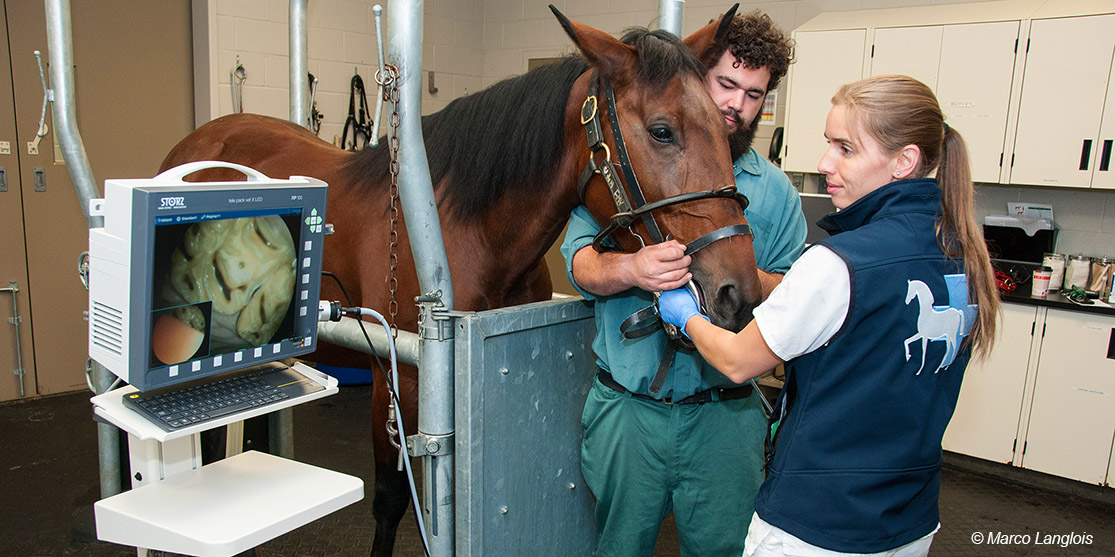Recent purchase of state-of-the-art equine dentistry equipment
The Equine Hospital has recently purchased a dental endoscope as well as several high precision German dental instruments that will allow us to perform a standing extraction technique by intradental screw placement.
Equine teeth were traditionally extracted under general anesthesia by repulsion. According to a Cornell University study, up to 50% of cases had complications associated with the procedure and 20% persisted in the long term1. Added complications arise from the inherent risks of general anesthesia in the equine patient.
Recent advances such as oral endoscopy, improved design of extraction instruments and the development of the transbuccal screw extraction technique have revolutionized our approach to standing dental procedures. Oral endoscopy allows a magnified view of dental and soft tissue structures of the horse’s mouth, making diagnostic procedures and follow-up exams easier and more precise. Standing tooth extractions are less expensive for the client and carry a lesser anesthetic risk and complication rate for the patient.
The purchase of an oral endoscope, dental instruments and intradental screw by the Equine Surgery Service is part of a project developed by Dr. Sheila Laverty aimed at meeting our clients’ requests, clients who are increasingly concerned about offering the best possible quality of dental care for their companions and equine athletes. This specialized equipment also gives our clients an alternative to surgery under general anesthesia. The latter remains an available option for intractable horses or for more complex dental procedures.
These purchases were made possible by the CHUV’s Fund. The Faculté de Médecine vétérinaire has created this fund to enable acquisition of advanced equipment and support implementation of new technologies. Donor support allows the CHUV to remain an international reference in veterinary medicine, improves the quality of care for animals and supports training of our veterinary students.

